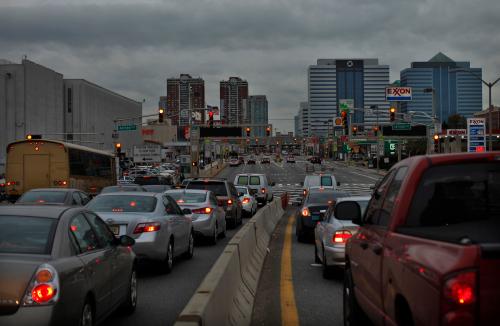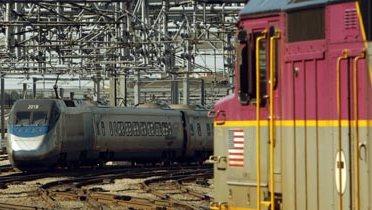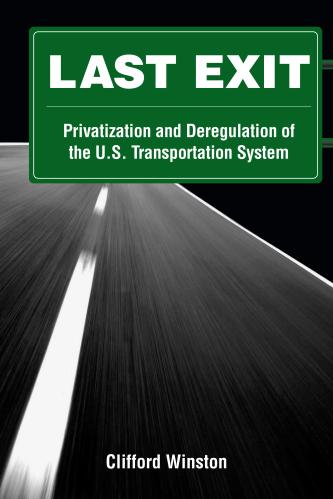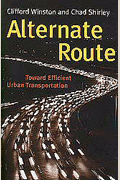Policymakers have focused a lot of attention on infrastructure recently with the stimulus, with a new proposal by President Obama for additional spending, and the idea of an infrastructure bank being discussed on Capitol Hill. But Clifford Winston, senior fellow in Economic Studies and author of the new Brookings book Last Exit: Privatization and Deregulation of the U.S. Transportation System, says the current transportation system is broken and any spending through the political process will not be effective.
Infrastructure Bank Not Workable
“The idea for an infrastructure bank is to increase national spending on infrastructure. So the idea would be that there is money that is provided by the public sector, but it would be leveraged by contributions from the private sector. The bank would be managed by a board whose objectives (presumably) would be to increase the returns from those investments. In principle, the idea is that the money is going to go to areas where you can get the biggest bang for the buck because you now have the pressure of the private sector in there. However, the problem is it is still going to be working through a political process in which the actual wish list for projects is going to be coming from the states.”
Infrastructure Stimulus a Failure
“Stimulus spending as well as an infrastructure bank still are working within the existing political process in which we allocate funds for infrastructure. So states are, basically, competing for projects. Probably more importantly, within a state there is competition for projects. So California will get money, but then all of the various (what they call) metropolitan planning offices are going to come in and say ‘we want some of it.’ And generally there is a lot of pressure to sort of have equity as a key consideration so everybody gets a bit of it. Places that have historically gotten a lot more usually are the most congested areas that actually need the money but will not get money according to the actual problems in transportation that they have. This is where you start hearing about “roads to nowhere,” and “bridges to nowhere,” and these kinds of things because everybody has got to get in on it.
The stimulus package really had the same kinds of problems in that there were many projects that people wanted. Whether these things made any sense; whether they were in the most congested areas; whether they were in the areas suffering the greatest physical deterioration – that really wasn’t part of the problem (or part of the equation if you will) as to where the money was going to go as ‘we have a project, we can put it in and we would like some of the money just as other places want the money.’ So that is the fundamental problem to begin with – just actually allocating the money to worthy projects.”
Transportation Not Stimulative
“In principal, infrastructure investments can be stimulative but you have to do them correctly. As is clear, there are so many political and economic obstacles to deal with them correctly, it is very hard to find very persuasive evidence that they really have been stimulative. And I might add that that is not the point of them. What is overlooked is that these are investments. Like any public investment their objective is to maximize what we call net benefits to society. Part of that may be stimulative, but the most important thing about them is that they provide benefits to users. The idea is to reduce delay, improve safety, and so on and so forth. That really should be the focus and when you start getting away and having other objectives (even if they are worthy objectives), generally they are going to cause more problems because then you start justifying things on those grounds, and you overlook the fact that the most primary thing that you want to accomplish is not being accomplished.”









Commentary
Reforming America’s Transportation Infrastructure
September 22, 2010